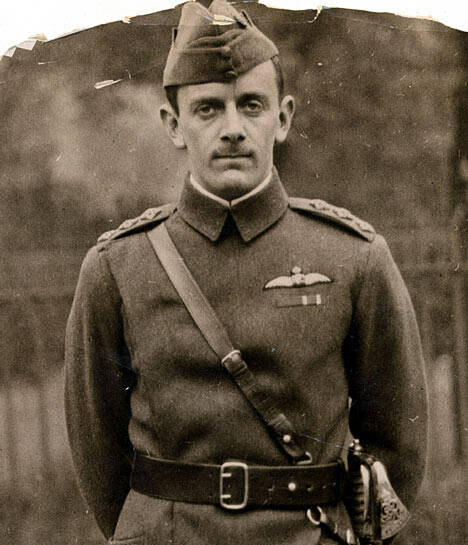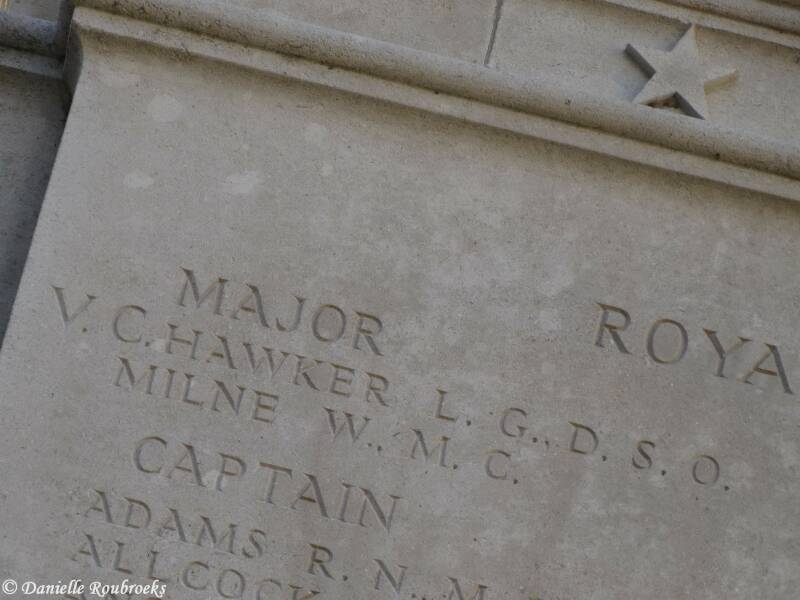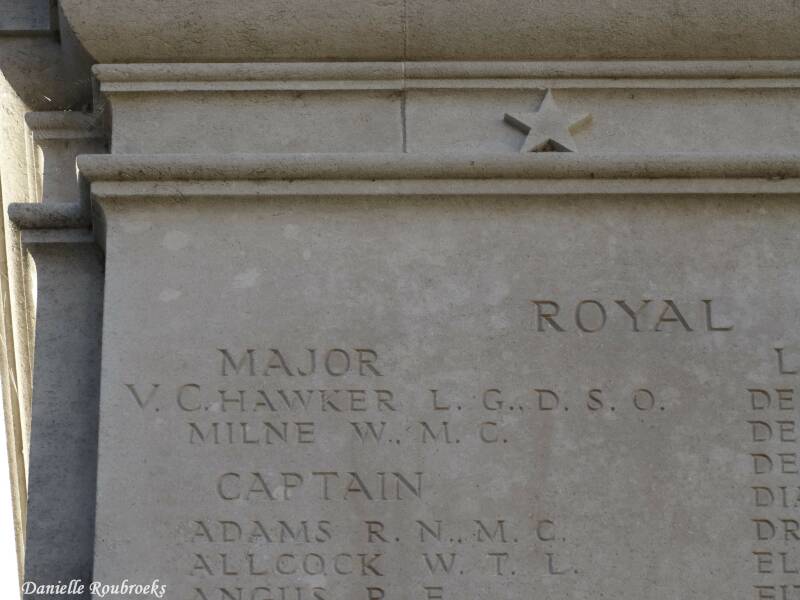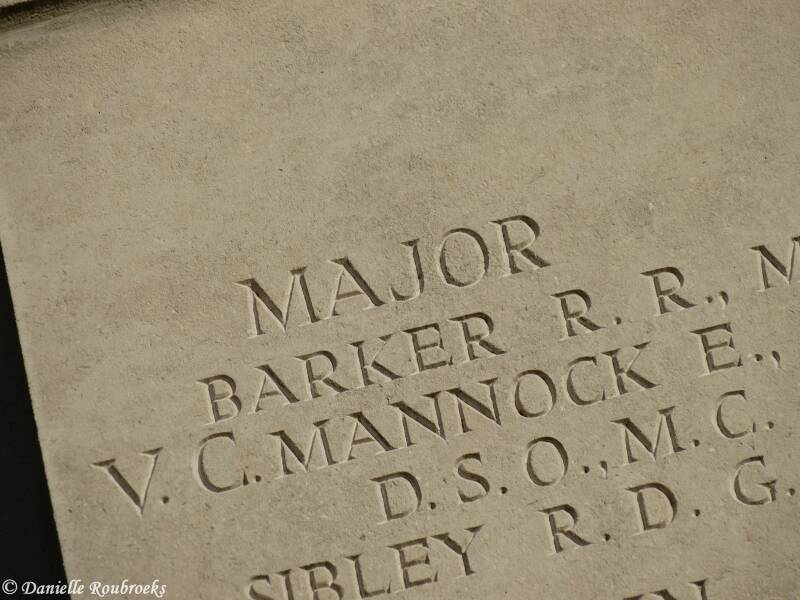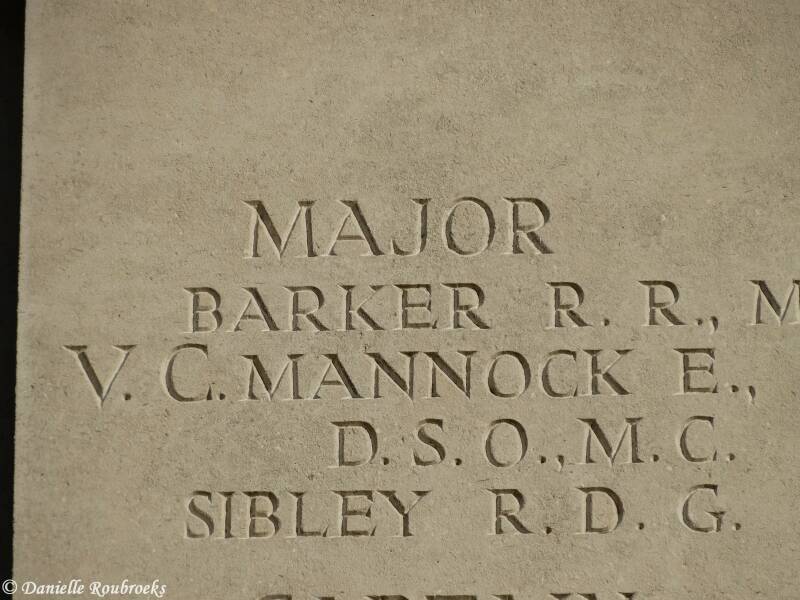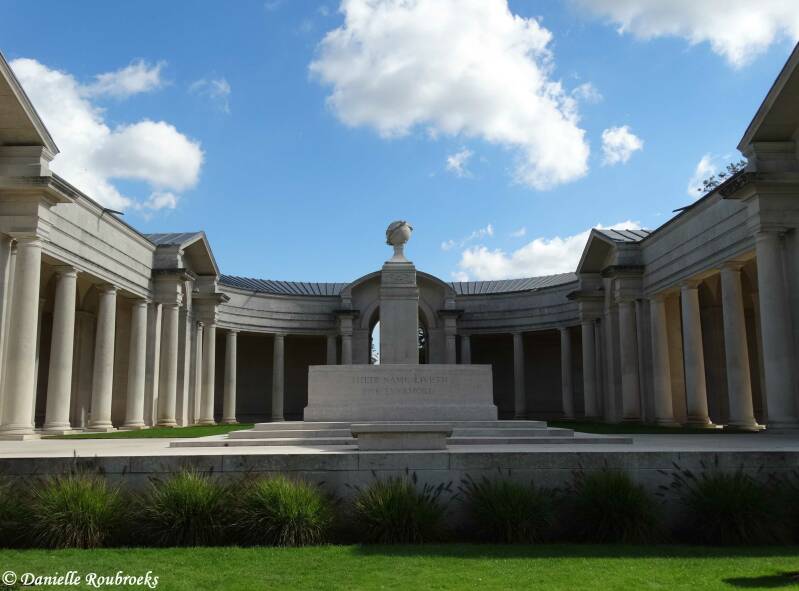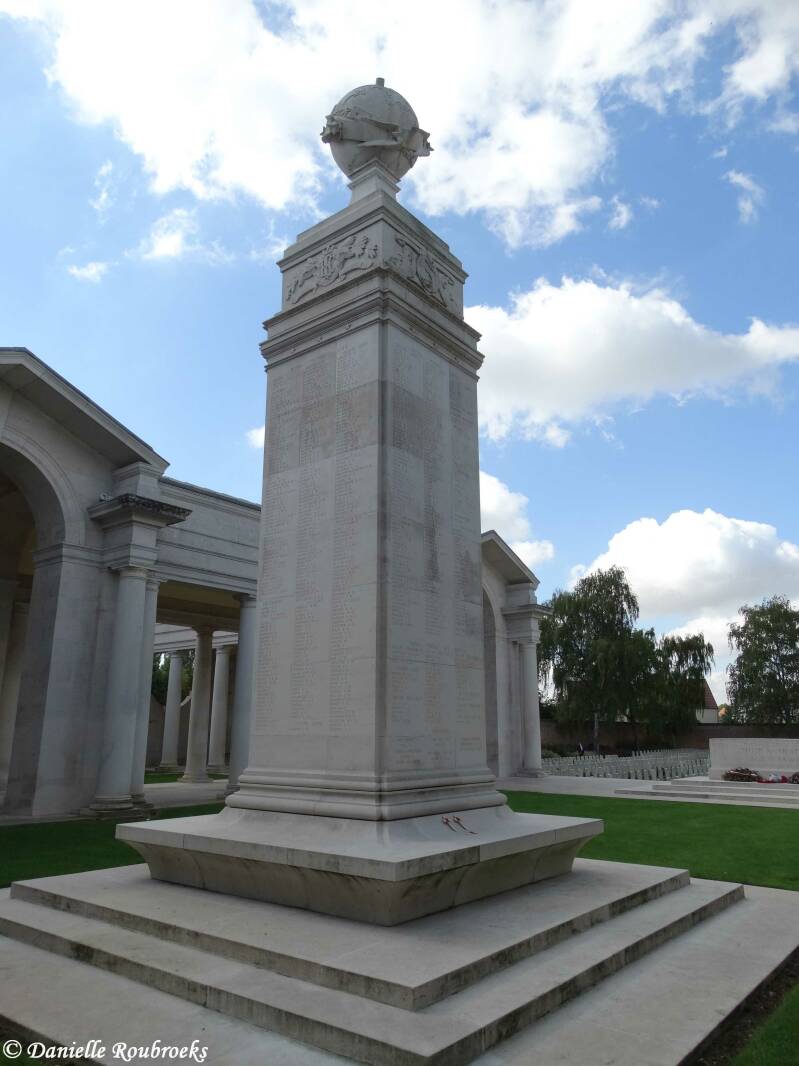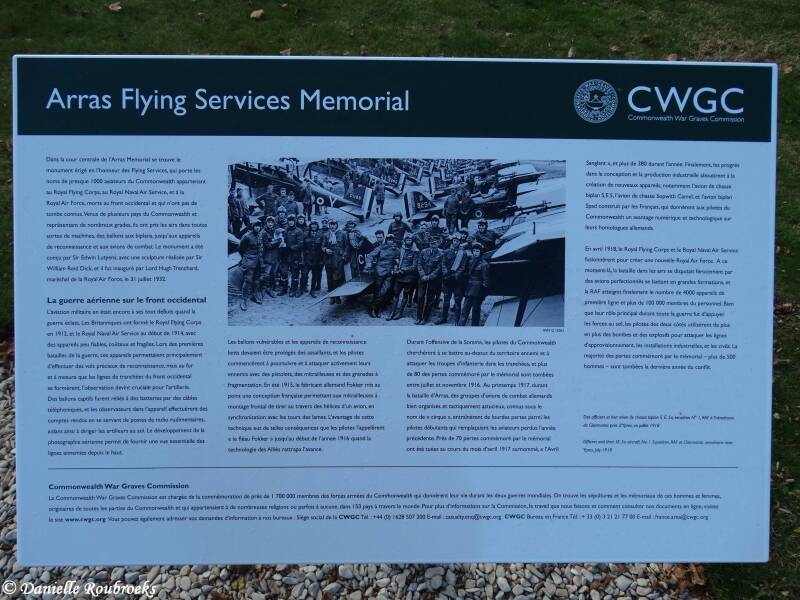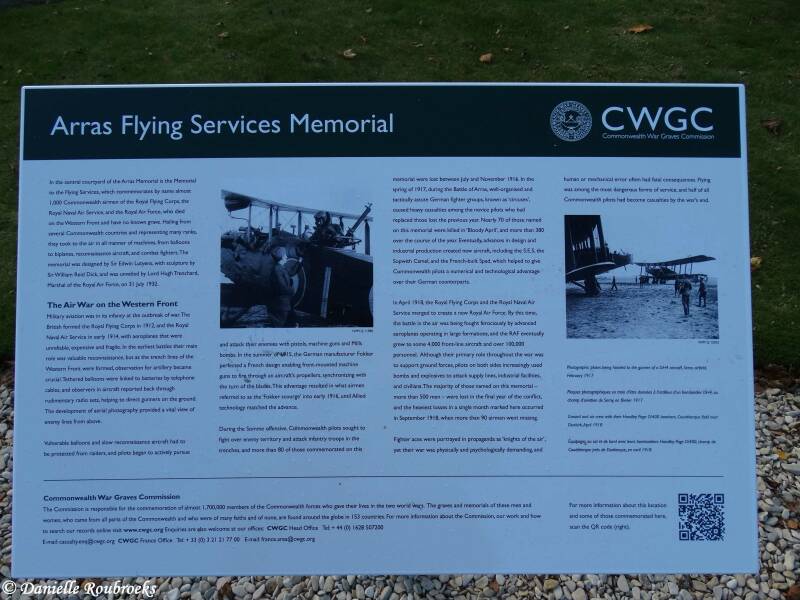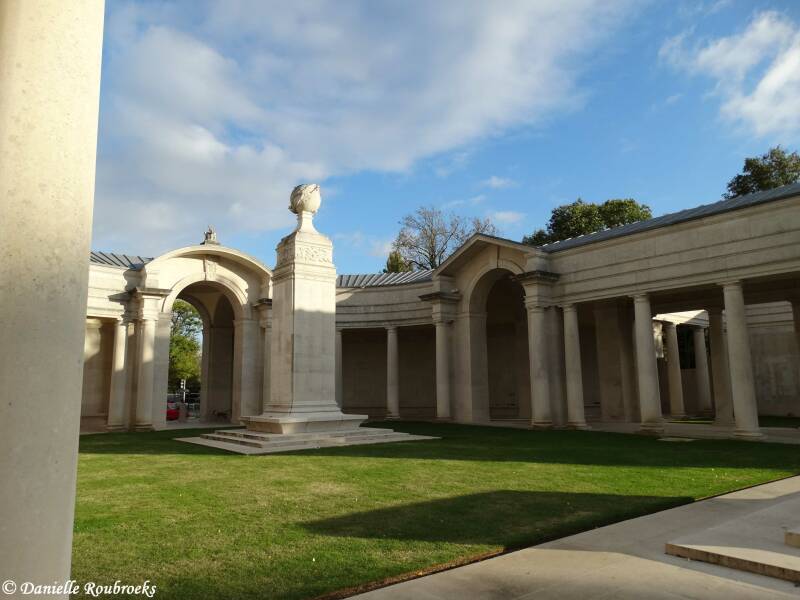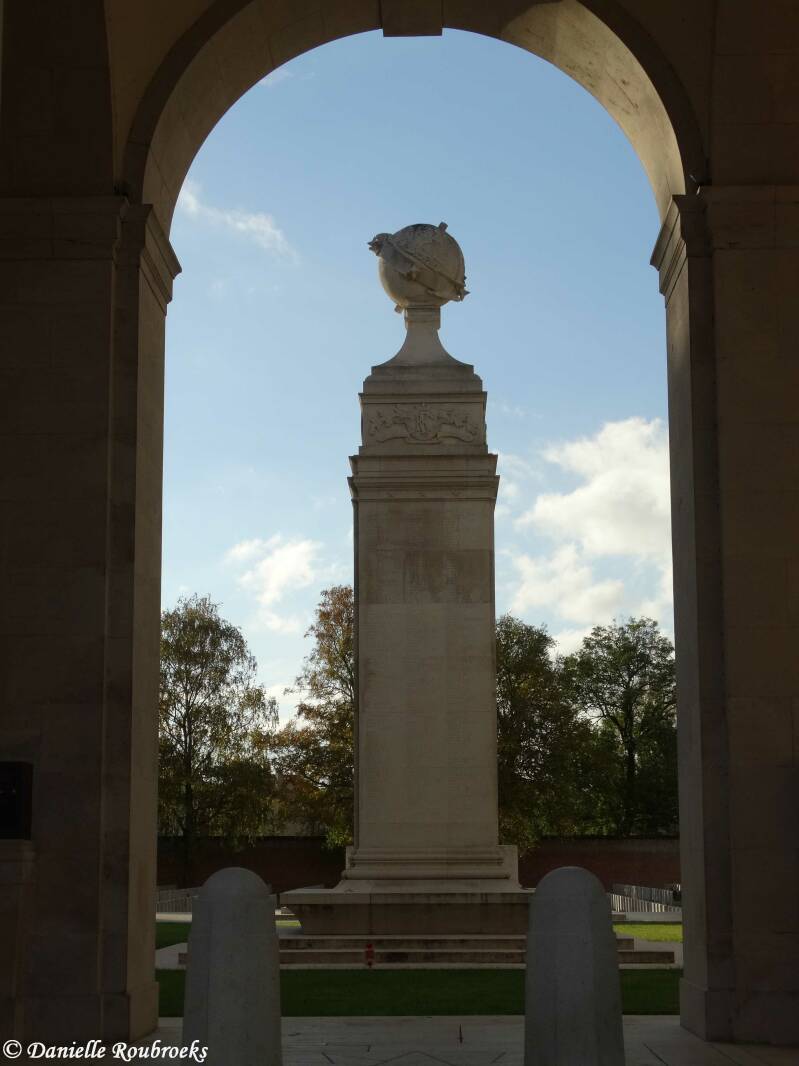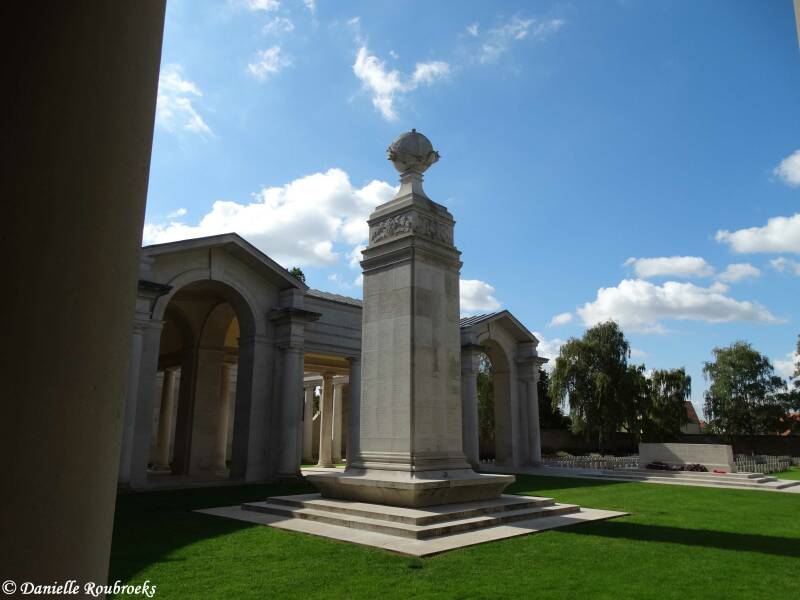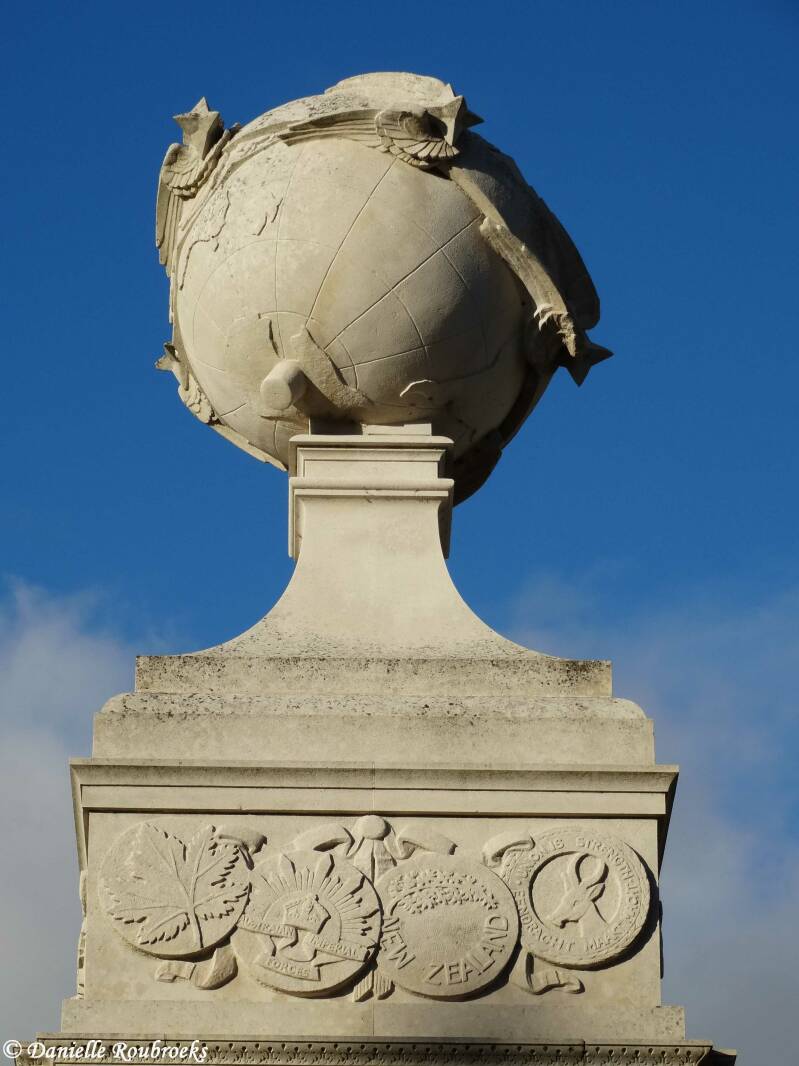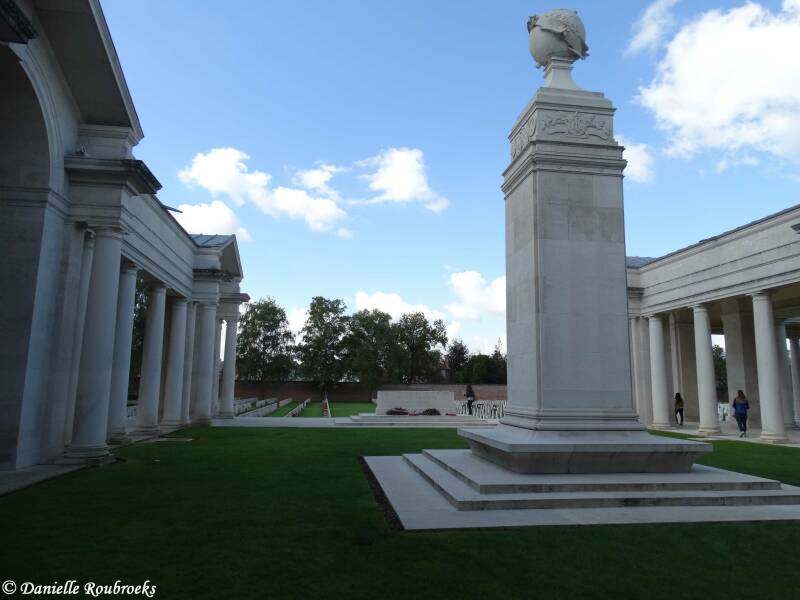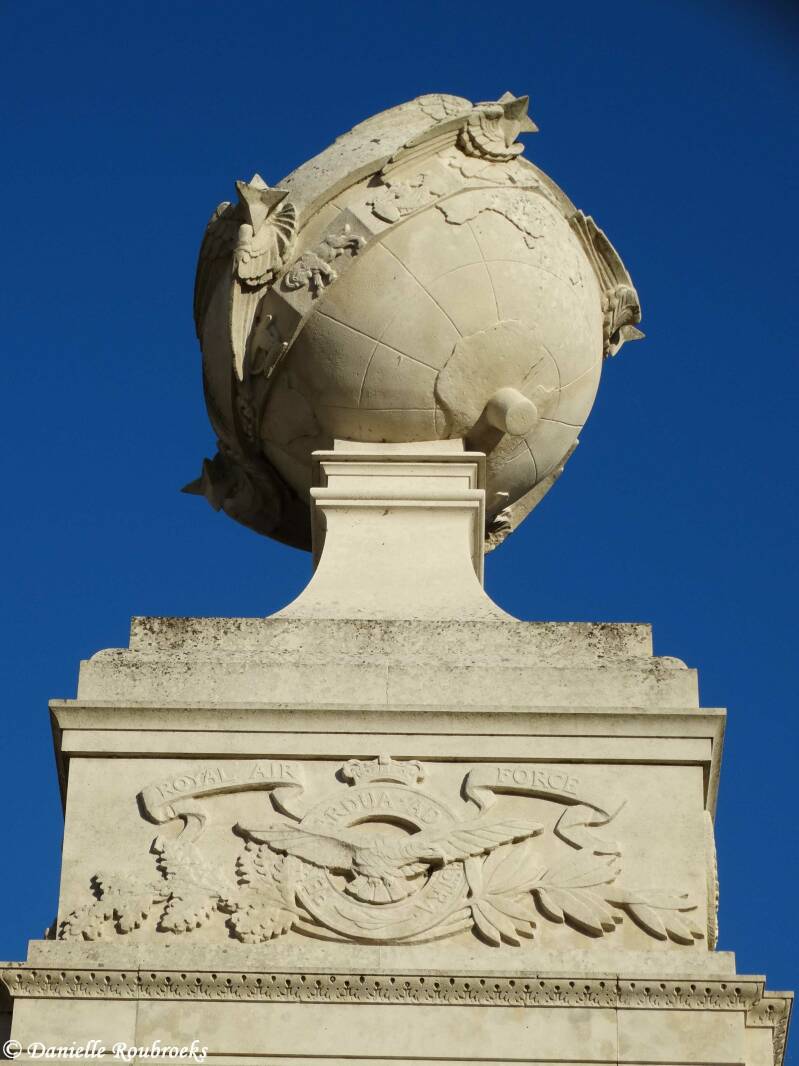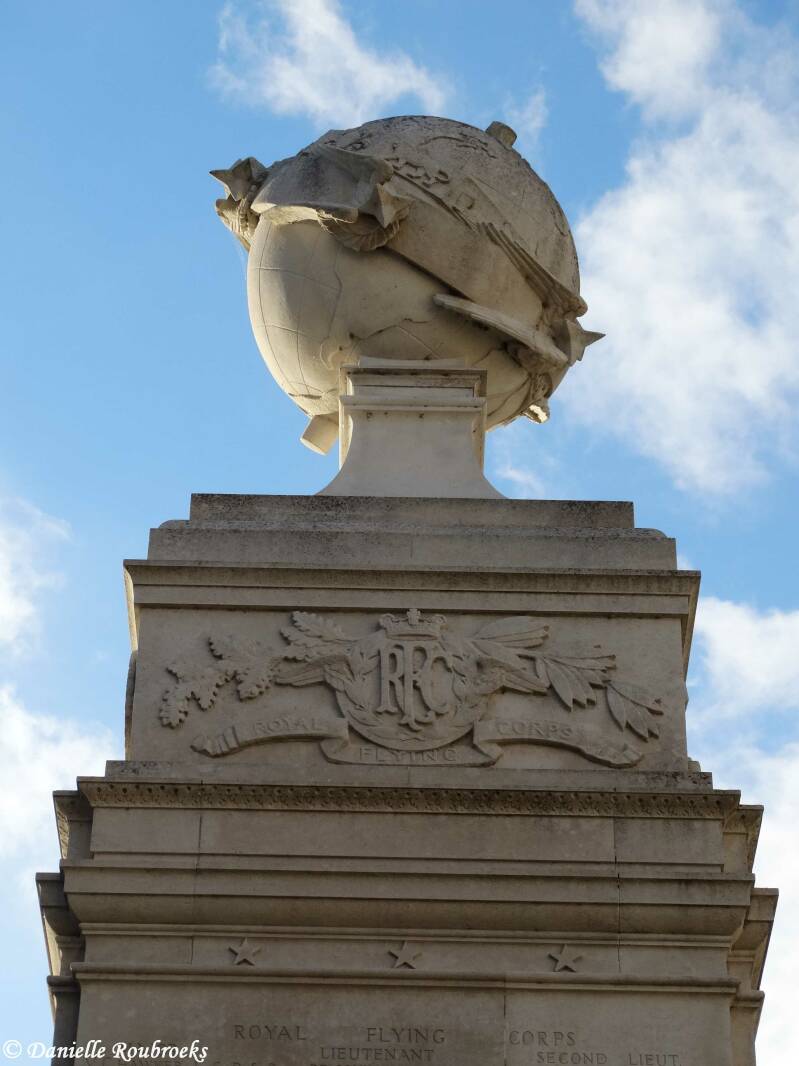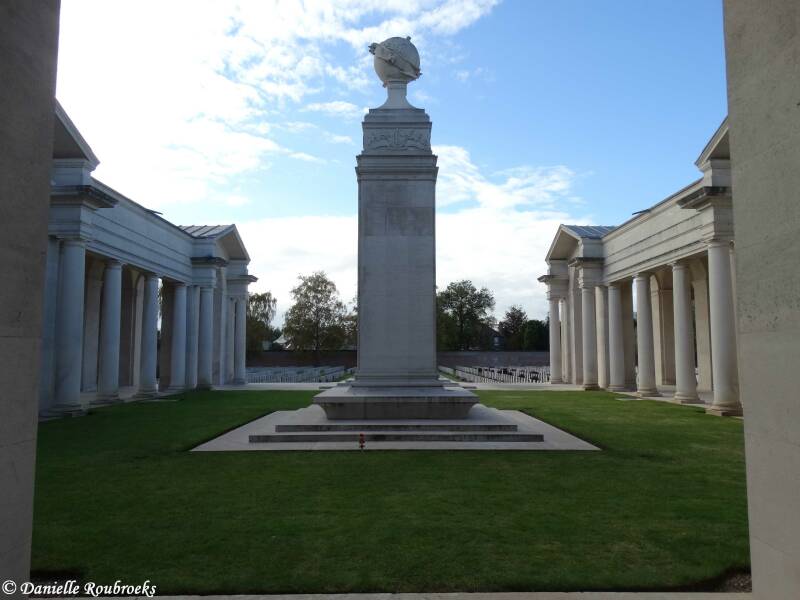Arras Flying Services Memorial
Historical Information (Source: CWGC)
Commemorates almost 1,000 airmen of the Royal Naval Air Service, the Royal Flying Corps, the Australian Flying Corps and the Royal Air Force, either by attachment from other arms of the forces of the Commonwealth or by original enlistment, who were killed on the whole Western Front and who have no known grave.
During the Second World War, Arras was occupied by United Kingdom forces headquarters until the town was evacuated on 23 May 1940. Arras then remained in German hands until retaken by Commonwealth and Free French forces on 1 September 1944. The 1939-1945 War burials number 8 and comprise 3 soldiers and 4 airmen from the United Kingdom and 1 entirely unidentified casualty. Located between the 2 special memorials of the 1914-1918 War is the special memorial commemorating an officer of the United States Army Air Force, who died during the 1939-1945 War. This special memorial, is inscribed with the words "Believed to be buried in this cemetery". In addition, there are 30 war graves of other nationalities, most of them German. Both cemetery and memorials were designed by Sir Edwin Lutyens, with sculpture by Sir William Reid Dick. The memorial was unveiled by Lord Trenchard, Marshal of the Royal Air Force on 31 July 1932 (originally it had been scheduled for 15 May, but due to the sudden death of French President Doumer, as a mark of respect, the ceremony was postponed until July).
Served with
- United Kingdom (914)
- Canadian (46)
- Australian (17)
- Indian (6)
- New Zealand (2)
- South African (1)
Served in
- Air Force (888)
- Army (56)
- Navy (42)
VICTORIA CROSS
Major Lanoe George HAWKER - 24th Sqdn. Royal Flying Corps and Royal Engineers
Died 23 November 1916 Age 25
Country of Service: United Kingdom
Awards: Victoria Cross, Distinguished Service Order, Mentioned in Despatches
Citation
An extract from The London Gazette, dated 24th Aug., 1915, records the following:-"For most conspicuous bravery and very great ability on 25th July, 1915. When flying alone he attacked three German aeroplanes in succession. The first managed eventually to escape, the second was driven to ground damaged, and the third, which he attacked at a height of about 10,000 feet, was driven to earth in our lines, the pilot and observer being killed. The personal bravery shown by this Officer was of the very highest order, as the enemy's aircraft were armed with machine guns, and all carried a passenger as well as the pilot."
(Source: Wikipedia)
Major Edward MANNOCK - 85th Sqdn. Royal Air Force and Royal Engineers
Died 26 July 1918 Age 31
Country of Service: United Kingdom
Awards: Victoria Cross, Distinguished Service Order and 2 Bars, Military Cross and Bar, Mentioned in Despatches
Citation
An extract from the "London Gazette", dated 18th July, 1919, records the following:-"On the 17th June, 1918, he attacked a Halberstadt machine near Armentieres and destroyed it from a height of 8,000 feet. On the 7th July, 1918, near Doulieu, he attacked and destroyed one Fokker (red-bodied) machine, which went vertically into the ground from a height of 1,500 feet. Shortly afterwards he ascended 1,000 feet and attacked another Fokker biplane, firing 60 rounds into it, which produced an immediate spin, resulting, it is believed, in a crash.
On the 14th July, 1918, near Merville, he attacked and crashed a Fokker from 7,000 feet, and brought a two-seater down damaged. On the 19th July, 1918, near Merville, he fired 80 rounds into an Albatross two-seater, which went to the ground in flames. On the 20th July, 1918, East of La Bassee, he attacked and crashed an enemy two-seater from a height of 10,000 feet. About an hour afterwards he attacked at 8,000 feet a Fokker biplane near Steenwercke and drove it down out of control, emitting smoke. On the 22nd July, 1918, near Armentieres, he destroyed an enemy triplane from a height of 10,000 feet. Major Mannock was awarded the undermertioned distinctions for his previous combats in the air in France and Flanders:-Military Cross, gazetted 17th Sept., 1917; Bar to Military Cross, gazetted 18th Oct., 1917; Distinguished Service Order, gazetted 16th Sept., 1918; Bar to Distinguished Service Order (1st), gazetted 16th Sept., 1918; Bar to Distinguished Service Order (2nd), gazetted 3rd Aug., 1918. This highly distinguished officer during the whole of his career in the Royal Air Force, was an outstanding example of fearless courage, remarkable skill, devotion to duty and self-sacrifice, which has never been surpassed.
The total number of machines definitely accounted for by Major Mannock up to the date of his death in France (26th July, 1918) is 50 - the total specified in the " Gazette " of 3rd Aug., 1918, was incorrectly given as 48 instead of 41."
In addition to his Citation, the following information should also be noted: Major Mannock was involved in the downing of at least 23 further aircraft, but because others might well have assisted in their destruction these were not added to the total in his VC Citation.
(Source: Wikipedia)


